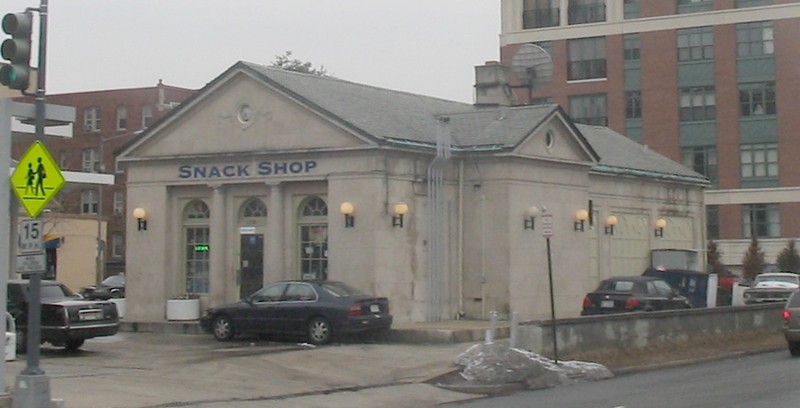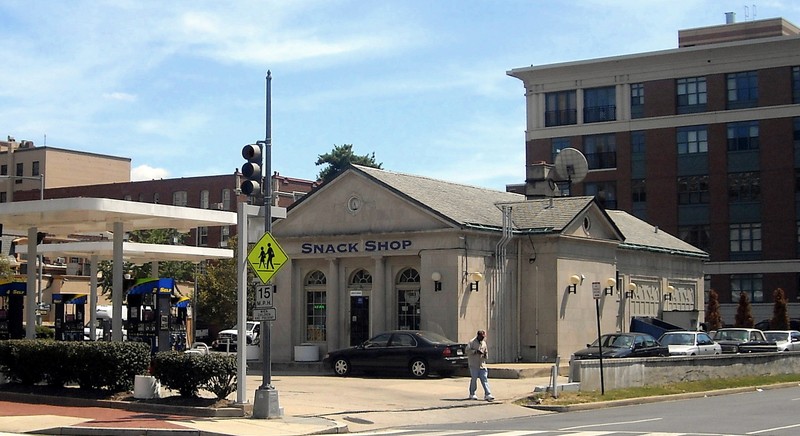Embassy Gulf Service Station
Introduction
Text-to-speech Audio
Images
The Embassy Gulf Service Station. Image by Ser Amantio di Nicolao at English Wikipedia (CC BY 2.5)

Another view of the service station. Image by AgnosticPreachersKid (CC BY-SA 3.0)

Backstory and Context
Text-to-speech Audio
By 1933, there were more than 170,000 gas stations doing business in the United States. In 1937, the Gulf Oil Corporation alone ran 60 service stations in Washington, D.C. The Embassy Gulf Service Station one such station, located near Dupont Circle and Embassy Row. Built in 1937, the building was designed as part of an effort, commissioned by Gulf Oil, to provide aesthetically-appealing service stations that complimented their surroundings. The motivation behind these artistic gas stations was to develop a corporate image through architecture.
The Neo-classical, one-story structure is in the freestanding temple form. It features a gable roof, limestone facades, Tuscan columnns, and fan transoms. Harvard-educated architect P.L.R. Hogner incorporated design elements and materials that were more commonly associated with a bank or library than an automobile service station. The final design was modified slightly by the Commission of Fine Arts, the National Park Service, and the National Capital Park and Planning Commission.
The Embassy Gulf Service Station is noteworthy as an example of 1930s gas station architecture. The structure symbolizes the early history of automobile culture in the U.S., and the rise of its associated industries. Though Gulf Oil is no longer extant, the station is known by its historical name and still used for its original purpose as a repair shop. It is now owned by Sunoco and is open during regular business hours. The station was added to the National Register of Historic Places on September 30, 1993.
Sources
Carter, Elliott. Embassy Gulf Service Center, Atlas Obscura. Accessed June 5th 2020. https://www.atlasobscura.com/places/embassy-gulf-service-center.
National Park Service. "Embassy Gulf Service Station." Washington, DC: A National Register of Historic Places Travel Itinerary. Accessed December 18, 2016. https://www.nps.gov/nr/travel/Wash/dc52.htm.
"Embassy Gulf Service Station." City Walking Guide. Accessed December 18, 2016. http://www.citywalkingguide.com/dupontcircle/embassygulfservicestation.
"Embassy Gulf Service Station." DC Historic Sites. Accessed December 18, 2016. http://historicsites.dcpreservation.org/items/show/178.
"Embassy Gulf Service Station." Wikipedia, the Free Encyclopedia. Accessed December 18, 2016. https://en.wikipedia.org/wiki/Embassy_Gulf_Service_Station.
https://commons.wikimedia.org/w/index.php?curid=26639076
https://commons.wikimedia.org/w/index.php?curid=6059506
